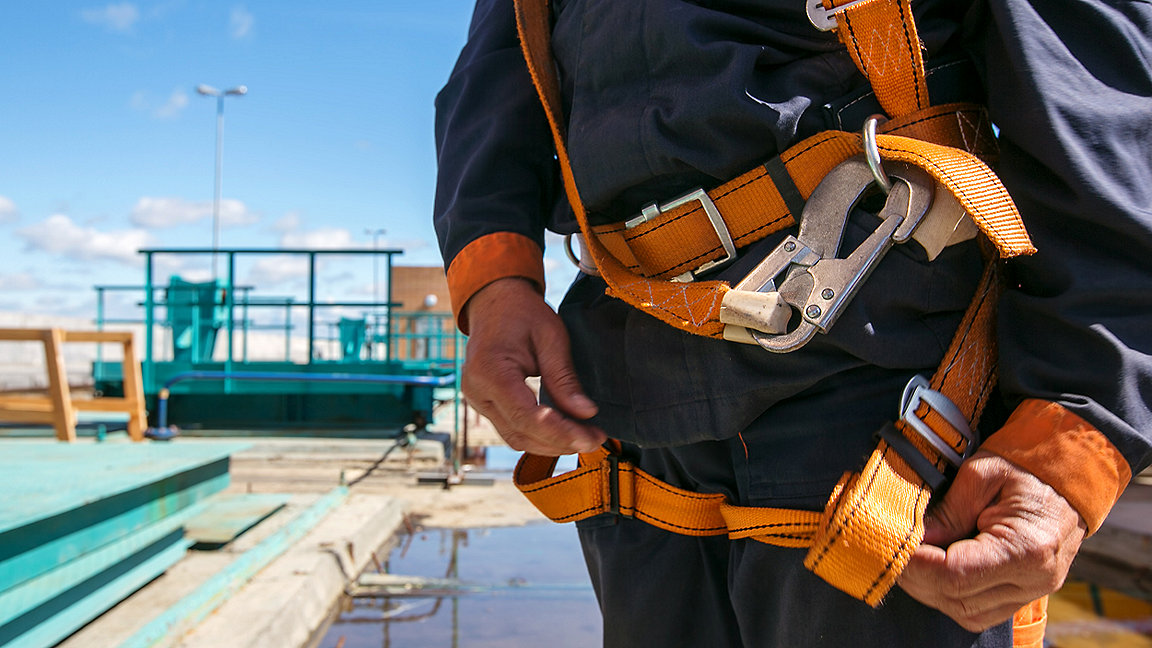
In December, property developers Thorndyke Developments Limited was fined £100,000 while David Hartley, former director of North West Facilities Limited and the principal contractor for the construction project, was handed a six-month custodial sentence suspended for two years.
The prosecution arose from the death of a self-employed labourer who was fatally crushed while demolishing a wall. Jakub Fischer, the deceased, had been engaged by North West Facilities to work on a house refurbishment for Thorndyke Developments.
On 5 June 2019, the 41-year-old, who was originally from Czechia, was given the task of demolishing a dividing wall between the property and the neighbouring house. Other workers on the project left the site at 3.30pm.
When a neighbour returned home from work at around 5.40pm, they found Fischer trapped between an outer kitchen wall and a collapsed section of the dividing wall. He was pronounced dead at the scene by the emergency services.
The Health and Safety Executive (HSE) investigation concluded that:
- the demolition work was not planned, and had not been identified in the construction phase plan
- no risk assessment or method statement were in place for the demolition work
- Fischer was not trained to carry out safe demolitions, and
- there was a lack of supervision that allowed this incident to occur.
Developer found in breach of duty as client
Thorndyke pleaded guilty to breaching its duty under regulation 4(1) of the Construction (Design and Management) Regulations 2015 (CDM). This requires that clients of construction projects 'must make suitable arrangements for managing a project, including the allocation of sufficient time and other resources'.
The HSE makes clear on its website what is expected of commercial clients, stating that they 'have a crucial influence over how [construction] projects are run, including the management of health and safety risks. Whatever the project size, the commercial client has contractual control, appoints designers and contractors, and determines the money, time and other resources for the project.'
Furthermore, the commercial client cannot delegate its safety duties under CDM to the principal contractor.
Prosecuting directors and managers
Hartley meanwhile was the joint director of North West Facilities. According to the records at Companies House he resigned his directorship in November 2019, five months after the incident.
He pleaded guilty to an offence pursuant to section 37(1) of the Health and Safety at Work etc. Act 1974. This applies to a 'director, manager, secretary or other similar officer' of a company, and is a secondary liability offence.
For the individual to be guilty, HSE must first prove the company is guilty of a health and safety offence. Once this is established, the prosecution must then prove that the company's offence was due to the individual's consent or connivance – in other words, their turning a blind eye – or attributable to their neglect.
The meaning of 'neglect' was considered in the Scottish case of Wotherspoon v HM Advocate [1978], in which the court stated: 'in considering in a given case whether there has been neglect within the meaning of section 37(1) on the part of a particular director or other particular officer charged, the search must be to discover whether the accused has failed to take some steps to prevent the commission of an offence by the corporation to which [they belong] if the taking of those steps either expressly falls or should be held to fall within the scope of the functions of the office which [they hold].'
In this matter HSE's case was that North West Facilities had breached CDM regulation 13(1), which states that a principal contractor 'must plan, manage and monitor the construction phase and coordinate matters relating to health and safety during the construction phase'. North West Facilities was not prosecuted. However, it is not necessary to convict the company in order to secure a conviction against an individual under section 37(1) of the 1974 Act.
While an officer of the company such as a director falls under section 37(1), a manager will only be subject to this provision if they are in a position of real authority, with the power and responsibility to decide corporate policy and strategy. This was established in the Court of Appeal case of R v Boal [1992] which considered a similar provision to section 37(1) under the Fire Precautions Act 1971.
If section 37(1) does not apply to a manager then they can still face prosecution pursuant to section 7(a) of the 1974 Act. Employees will be guilty of an offence under this provision if they fail to take reasonable care for their own health and safety and that of other persons (e.g. fellow workers) who may be affected by their acts or omissions at work. Section 7(a) applies to all employees from the shop floor up to senior management.
For example, in 2017 two scaffold inspectors pleaded guilty at Manchester Magistrates' Court to breaching section 7(a) of the 1974 Act. The prosecution arose from an incident where a worker fell through a gap between the platform of the scaffolding and the building, sustaining serious injury.
The scaffolding had been signed off as safe for use by Stephen Harper and Garry Arnold, who were each sentenced to 170 hours' community service.
HSE's policy to investigate individual responsibility
In its Enforcement Policy Statement, the HSE says that when carrying out an investigation, it 'will consider the management arrangements and the role played by individual directors and managers'.
Meanwhile, HSE's Enforcement Guide says '[q]uestions that may be relevant include:
- did the director/senior manager have effective control over the matter?
- did [they] have (or ought [they] to have had) knowledge of the circumstances surrounding the event?
- did [they] fail to take obvious steps to prevent the event?
- [have they] had previous advice/warnings?
- was there previous advice to the company?
- is responsibility shared between more than one level of management?'
At the conclusion of the prosecution of Thorndyke Developments and Hartley, HM Inspector of Health and Safety Christine McGlynn, who brought the proceedings, said HSE would not hesitate to consider the roles of 'those individuals such as directors and managers who are the controlling minds and best placed to direct work and ensure that it is carried out without risks to health and safety'.
'HSE [said they] would not hesitate to consider the roles of "those individuals such as directors and managers who are the controlling minds and best placed to direct work and ensure that it is carried out without risks to health and safety"'
Sentencing individuals for health and safety offences
In February 2016 the Sentencing Council for England and Wales published the sentencing guideline Health and safety offences, corporate manslaughter and food safety and hygiene offences: definitive guideline. Although not bound by this guideline the Scottish courts have applied it to sentencing in health and safety cases. Before its publication individuals convicted of health and safety cases had rarely been sent to prison. However, the impact of the guideline has been to lower the threshold for imprisonment.
The guideline says health and safety offences are concerned with failures to manage risks to health and safety and do not require proof that the offence caused any actual harm: the offence is creating a risk of harm.
Sentence is determined by reference to culpability, the seriousness of the harm risked and the likelihood of harm occurring. A review of the impact of the guideline in 2019 found that 57% of convicted individuals received a fine and 10% a community order while roughly one in four received a custodial sentence, even though the vast majority of these were suspended and only 5% were imprisoned immediately.
Surveyors reminded to understand safety role
Most prosecutions that arise from failures on a construction project turn on how the work was planned, managed and monitored.
Surveyors and project managers, along with their respective organisations, have a duty of care towards those with whom they work, as well as other organisations and contractors on the construction project. This requires them to identify a wide range of risks, and have the competence to understand and mitigate them.
In broad terms, those with management responsibilities need to be satisfied that:
- there are safe systems of work in place with sufficient supervision, along with safe plant and equipment
- those engaged in the work are competent to undertake it, and
- there is an appropriate system in place for reviewing and monitoring (which is sufficiently documented) the safe systems of work and supervision, the plant and equipment, and the competency of those undertaking the work.
It is therefore important that surveyors and project managers understand their respective roles and scope of those roles in the construction project, and their part in the management of safety.
Of course, there will be occasions where, no matter how good the safe systems of work and supervision are, individuals ignore the rules and press on with working in an unsafe manner. Nonetheless companies and their managers will need to be able to demonstrate that all reasonably practicable steps were taken to ensure the work was done safely.
Mike Appleby is a partner at Fisher Scoggins Waters LLP
Related competencies include: Health and Safety, Legal/regulatory compliance

